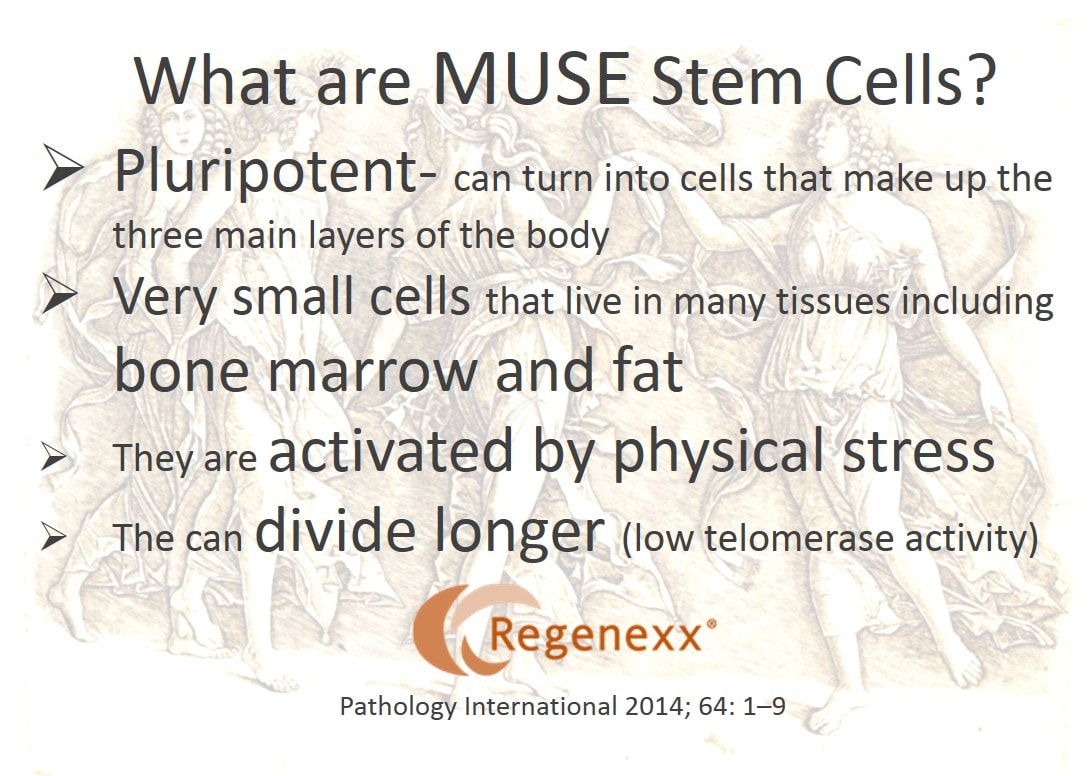Find Your Own MUSE: What Are MUSE Stem Cells?
What are MUSE stem cells and why should you care? After all, you’ve heard of embryonic stem cells and adult stem cells, so why should we all be excited about a whole new class of stem cells? Because MUSE stem cells are special and along with the adult stem cells we’ve known about. they help to keep your body from falling apart.
Most people don’t recognize that without loads of stem cells in every tissue in your body, you’d be dead inside a few months. Why? The cells in your body wear out all the time. For example, you replace your whole blood volume every 120 days through stem cells. Every trip to the gym or run kills off countless muscle, tendon, bone, and cartilage cells. Even your brain and nerves have local stem cells that replace dead cells. MUSE cells are tiny cells that respond to injury and can repair damaged tissue. Adult stem cells also do this, so consider MUSE cells the reserve forces. For example, in situations that would normally kill off adult stem cells like nasty chemical exposure, very low oxygen, or extreme cold, MUSE cells get kicked into gear. So while adult stem cells are used for the typical repairs, MUSE cells are used to help repair the bad injuries.
What are some of the differences between a MUSE cell and the usual adult stem cell? Most adult stem cells can turn into loads of tissue types, but they tend to stick with one main tissue category that makes up the three layers of the early embryo. These are outside tissues like skin called ectoderm, middle tissues like bone and cartilage known as mesoderm, and inside tissues like blood vessels called endoderm. MUSE cells are like an all purpose athlete that can turn into all three categories, not just one. The MUSE cells in bone marrow tend to be more versatile in this regard than those in fat, as they get recruited from the bone marrow to all over the body to help repair many different tissues. Another important property of these cells is that they can divide longer than most adult stem cells.
The upshot? MUSE cells, which were discovered a few years ago, are an important player in the cornucopia of stem cells that live in your body. There are other small stem cells like VSELs and BLSCs and many other larger adult stem cells. All of these cells keep you going and all can likely help play a part in helping to repair damaged tissues. So finding your inner MUSE now has a new meaning!

If you have questions or comments about this blog post, please email us at [email protected]
NOTE: This blog post provides general information to help the reader better understand regenerative medicine, musculoskeletal health, and related subjects. All content provided in this blog, website, or any linked materials, including text, graphics, images, patient profiles, outcomes, and information, are not intended and should not be considered or used as a substitute for medical advice, diagnosis, or treatment. Please always consult with a professional and certified healthcare provider to discuss if a treatment is right for you.
